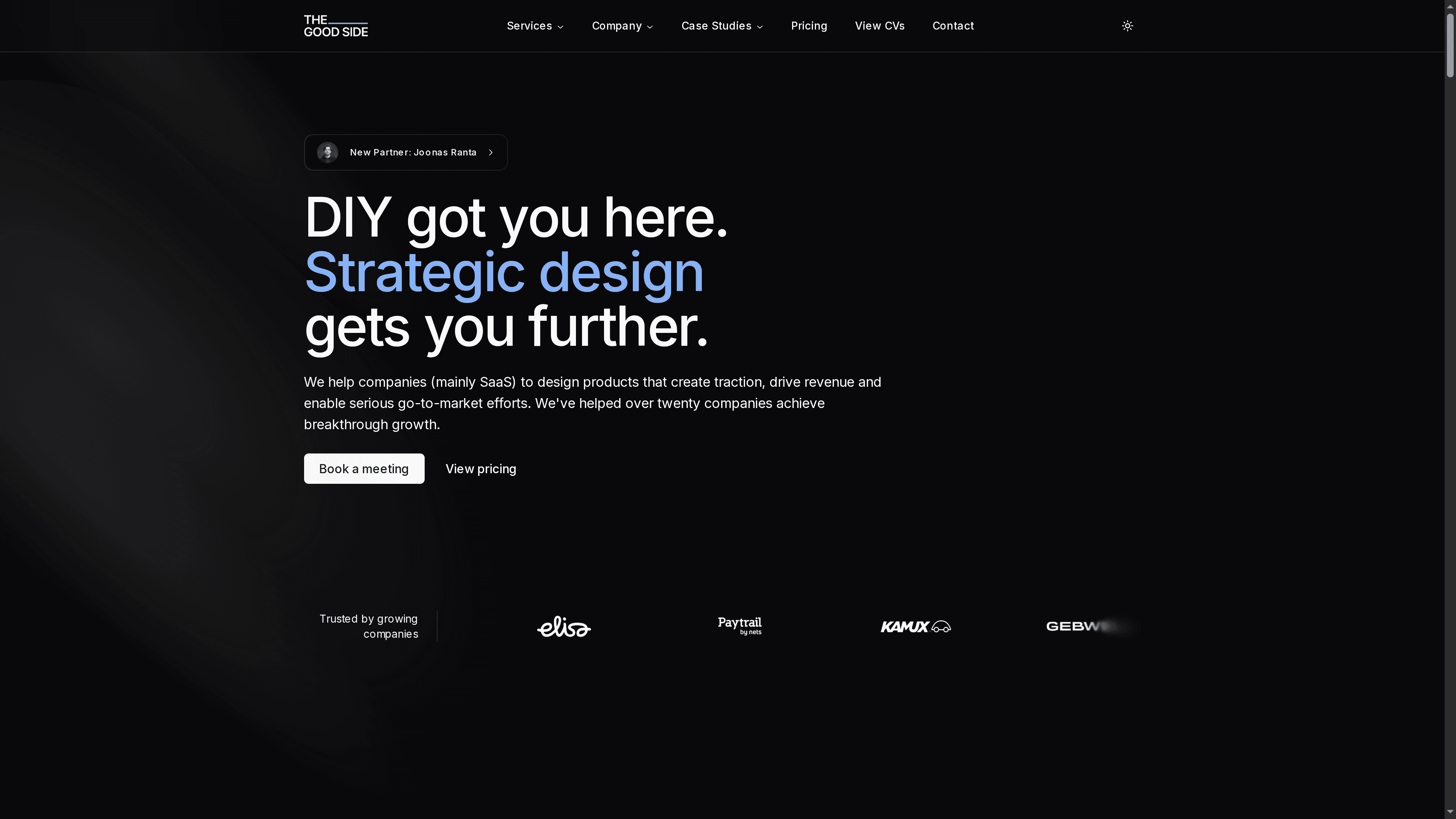Why Improve Product UX: Complete Guide for SaaS
Why improve product UX? This comprehensive guide covers UX fundamentals, business impact, ROI, SaaS-specific challenges, and proven improvement strategies.

Did you know that 88 percent of online consumers are less likely to return to a site after a bad user experience? Every click, scroll, and interaction shapes a user’s opinion about a product. In the fast-moving SaaS world, strong product UX is not just about looks. It can decide whether users stick around, recommend your product, or leave in frustration. Understanding product UX means discovering how thoughtful design can turn everyday software into enjoyable, reliable tools people want to use.
Table of Contents
- Defining Product UX and Its Importance
- Core Principles of Effective Product UX
- Business Impact of Enhanced UX Design
- Measuring and Maximizing UX ROI in SaaS
- Common UX Challenges and How to Solve Them
Key Takeaways
| Point | Details |
|---|---|
| Importance of UX | Exceptional product user experience (UX) is essential for SaaS companies, serving as a fundamental competitive advantage that directly influences user activation, satisfaction, and retention. |
| Core UX Principles | Key principles of effective UX design include usability, consistency, clarity, accessibility, simplicity, and performance, all of which enhance user interactions and satisfaction. |
| Business Impact | Strategic UX design leads to improved conversion rates, lower customer acquisition costs, and reduced support expenses, translating design efforts into revenue generation opportunities. |
| Measurement of ROI | Measuring UX ROI involves tracking quantitative and qualitative KPIs to illustrate the impact of UX enhancements on business outcomes, emphasizing continuous iteration based on user feedback. |
Defining Product UX and Its Importance
Product user experience (UX) represents the comprehensive journey and emotional response a user encounters when interacting with a software product. According to Wikipedia’s User Experience Definition, UX encompasses a user’s interactions with a product, system, or service, including critical perceptions of utility, ease of use, and overall efficiency.
At its core, product UX goes far beyond simple interface design. It’s a holistic approach that integrates multiple dimensions of user interaction, including usability, emotional engagement, and functional performance. User experience design focuses on creating user-centered products by carefully considering usability, usefulness, desirability, brand perception, and comprehensive performance.
For SaaS companies, exceptional product UX isn’t just a nice-to-have feature—it’s a fundamental competitive advantage. Effective UX design can dramatically impact key business metrics by:
- Increasing user activation and adoption rates
- Reducing customer churn
- Enhancing user satisfaction and loyalty
- Differentiating your product in a crowded market
- Potentially reducing customer support costs
Understanding and prioritizing product UX means recognizing that users don’t just interact with your software—they form relationships with it. Every button click, navigation flow, and interaction moment contributes to their overall perception of your product’s value and reliability. When done right, UX transforms functional software into an intuitive, engaging experience that users genuinely enjoy using.
For a deeper exploration of research-driven UX strategies, check out our comprehensive guide on user experience research.
Core Principles of Effective Product UX
Designing exceptional product user experience requires understanding and implementing a strategic set of core principles that transform software from functional to extraordinary. According to ADA Global, effective UX design is guided by fundamental principles that elevate user interaction and satisfaction.
At the heart of powerful UX design are three critical foundational principles: usability, consistency, and clarity. Falmouth University highlights that these principles ensure users can complete tasks accurately and effectively while maintaining a uniform and straightforward design language. These core tenets translate complex interactions into intuitive experiences that feel natural and seamless.
The comprehensive UX design framework encompasses several interconnected strategies:
- User-Centricity: Placing user needs and expectations at the center of design decisions
- Consistency: Maintaining uniform design elements and interaction patterns
- Visual Hierarchy: Guiding user attention through strategic visual organization
- Simplicity: Eliminating unnecessary complexity and cognitive load
- Accessibility: Ensuring inclusive design that works for users with diverse abilities
- Performance: Maintaining swift, responsive interactions
SaaS products that master these principles don’t just create interfaces—they craft experiences that feel intuitive, responsive, and genuinely helpful. Every design choice becomes an opportunity to reduce friction, enhance understanding, and create emotional connections with users.

Here’s a comparison of core UX principles and their impact on SaaS products:
| UX Principle | Description | Key Impact in SaaS |
|---|---|---|
| Usability | Ensures tasks are easy and efficient | Higher user adoption |
| Consistency | Uniform design and interaction patterns | Reduced learning curve |
| Clarity | Clear communication and guidance | Fewer errors and frustrations |
| Accessibility | Inclusive design for all user abilities | Broader user base |
| Simplicity | Removes unnecessary complexity | Faster onboarding, less churn |
| Performance | Swift and responsive interactions | Improved satisfaction, loyalty |
For a deeper exploration of UX strategies, explore our step-by-step UI/UX process for SaaS success, which breaks down how top SaaS companies transform complex interactions into compelling user journeys.
Business Impact of Enhanced UX Design
In the competitive SaaS landscape, user experience (UX) design has transformed from a nice-to-have feature into a critical business strategy that directly influences financial performance. Fourmeta emphasizes that User-Centered Design (UCD) significantly enhances user satisfaction and engagement by meticulously aligning design with user expectations, ultimately driving user loyalty and sustained business growth.
Beyond aesthetic appeal, strategic UX design serves as a powerful lever for business performance. According to Chameleon, improving product UX can dramatically boost conversions, accelerate user activation, and secure long-term user commitment. This translates into tangible business outcomes that extend far beyond surface-level interactions.
The multifaceted business impact of enhanced UX design includes:
- Increased Conversion Rates: Intuitive interfaces that reduce friction and guide users seamlessly
- Lower Customer Acquisition Costs: More efficient onboarding and reduced abandonment rates
- Higher User Retention: Creating experiences that users find genuinely valuable and enjoyable
- Reduced Support Expenses: Proactively addressing user pain points through intelligent design
- Competitive Differentiation: Standing out in crowded markets through superior user experiences
For SaaS companies, investing in UX is not an expense but a strategic revenue generator. Every design improvement represents an opportunity to transform casual users into passionate advocates, ultimately driving sustainable business growth.
To see how targeted UX design can create measurable business impact, explore our Eemel.com case study showcasing 55% revenue growth through strategic design interventions.
Measuring and Maximizing UX ROI in SaaS
Measuring the return on investment (ROI) for user experience (UX) design requires a nuanced approach that goes beyond traditional metrics. Chameleon highlights that enhancing product UX can directly lead to increased conversions, faster user activation, and deeper user commitment, transforming UX from a cost center to a strategic revenue generator.
Successful UX ROI measurement demands a comprehensive framework that tracks both quantitative and qualitative impacts. Fourmeta emphasizes that implementing User-Centered Design (UCD) principles generates measurable improvements in user satisfaction and engagement, creating a direct pathway to demonstrating tangible business value.
Key performance indicators for tracking UX ROI include:
- Conversion Rate: Measuring percentage of users completing critical actions
- Customer Acquisition Cost: Evaluating reduction in marketing and onboarding expenses
- User Retention: Tracking changes in churn rates and user lifetime value
- Support Ticket Volume: Monitoring reduction in user support requests
- Net Promoter Score (NPS): Assessing user satisfaction and likelihood of recommendation
To truly maximize UX ROI, SaaS companies must view design as an ongoing investment, continuously iterating based on user feedback and performance data. This approach transforms UX from a one-time project into a dynamic, value-generating strategy that directly impacts bottom-line results.
For a deeper understanding of strategic UX implementation, explore our comprehensive UI/UX process for SaaS product success, which breaks down how top companies systematically improve their product experiences.
Common UX Challenges and How to Solve Them
SaaS product design is fraught with complex challenges that can significantly impact user experience and product adoption. ADA Global highlights that the most critical UX challenges revolve around ensuring accessibility, maintaining consistent design patterns, and implementing robust error prevention mechanisms.
Falmouth University emphasizes that addressing UX challenges requires a systematic approach, particularly through comprehensive usability testing that identifies and resolves navigation complexities and communication barriers. The goal is to create interfaces that communicate information clearly and intuitively, minimizing user confusion and frustration.
Key UX challenges and strategic solutions include:
- Accessibility Barriers: Design interfaces that accommodate diverse user abilities
- Inconsistent Design Language: Develop and enforce comprehensive design system guidelines
- Complex Navigation: Simplify user journeys with intuitive information architecture
- Feature Overwhelm: Implement progressive disclosure and contextual onboarding
- Performance Friction: Optimize loading times and reduce unnecessary interaction steps
Successful UX design is not about eliminating all challenges but creating intelligent systems that anticipate and gracefully manage potential user pain points. This requires continuous iteration, empathy, and a deep understanding of user behavior and expectations.

To understand how design challenges can rapidly escalate, explore our insights on how design debt forms when design responsibility spreads too thin, which provides critical perspective on maintaining design coherence.
Transform Your SaaS Product UX Into a Growth Engine
If you are struggling with inconsistent design patterns, clunky user journeys, or poor user activation, you are facing the exact challenges this guide discusses. Improving product UX is essential not only to reduce churn and user frustration but to unlock higher engagement and lasting customer loyalty. At The Good Side, we specialize in turning unprofessional interfaces and disconnected user flows into seamless, intuitive experiences that drive measurable business results.

Ready to turn your UX challenges into opportunities for growth? Our senior SaaS-focused designers deliver tailored UI/UX design, user research, and strategic positioning that accelerate activation, boost conversions, and increase revenue. Start with a free design audit and experience how easy it is to integrate expert design support rapidly. Discover how a focused user-centered design process combined with hands-on collaboration can elevate your product. Visit The Good Side today and start building a product experience your users will love.
Frequently Asked Questions
What is product UX and why is it important for SaaS companies?
Product UX refers to the overall journey and emotional response a user has when interacting with a software product. For SaaS companies, enhancing product UX is crucial as it can lead to higher user activation, reduced churn, increased satisfaction, and overall competitive advantage.
How can improving product UX impact business metrics?
Enhancing product UX can positively influence various business metrics, including increasing conversion rates, lowering customer acquisition costs, improving user retention, and potentially reducing customer support expenses.
What are the core principles of effective product UX design?
The core principles include usability, consistency, clarity, accessibility, simplicity, and performance. These principles help create intuitive and engaging user experiences that facilitate task completion and reduce friction.
How can I measure the ROI of UX design initiatives?
To measure the ROI of UX design, track key performance indicators such as conversion rates, customer acquisition costs, user retention rates, support ticket volumes, and Net Promoter Scores (NPS). These metrics help demonstrate the tangible business value of your UX improvements.